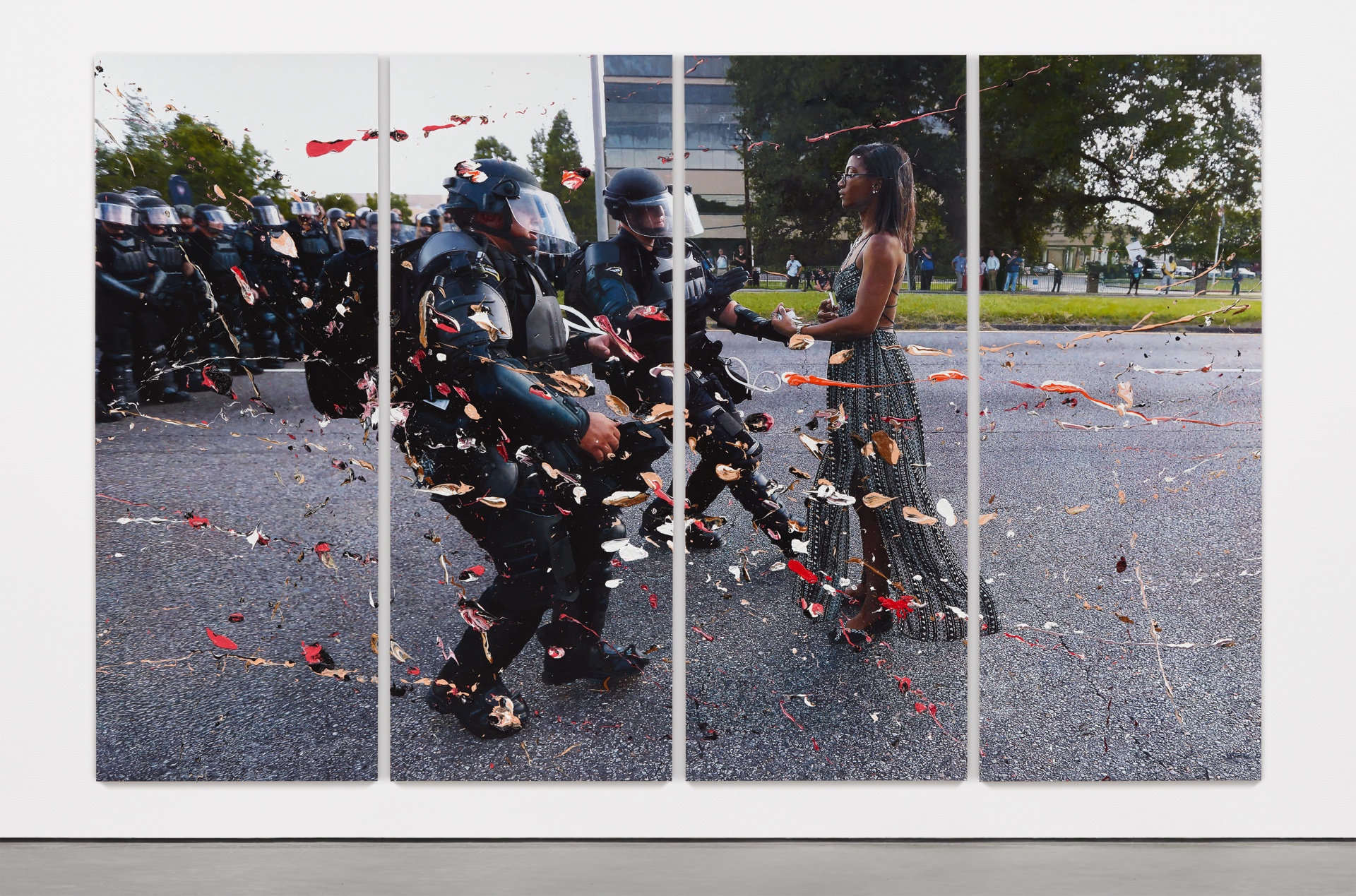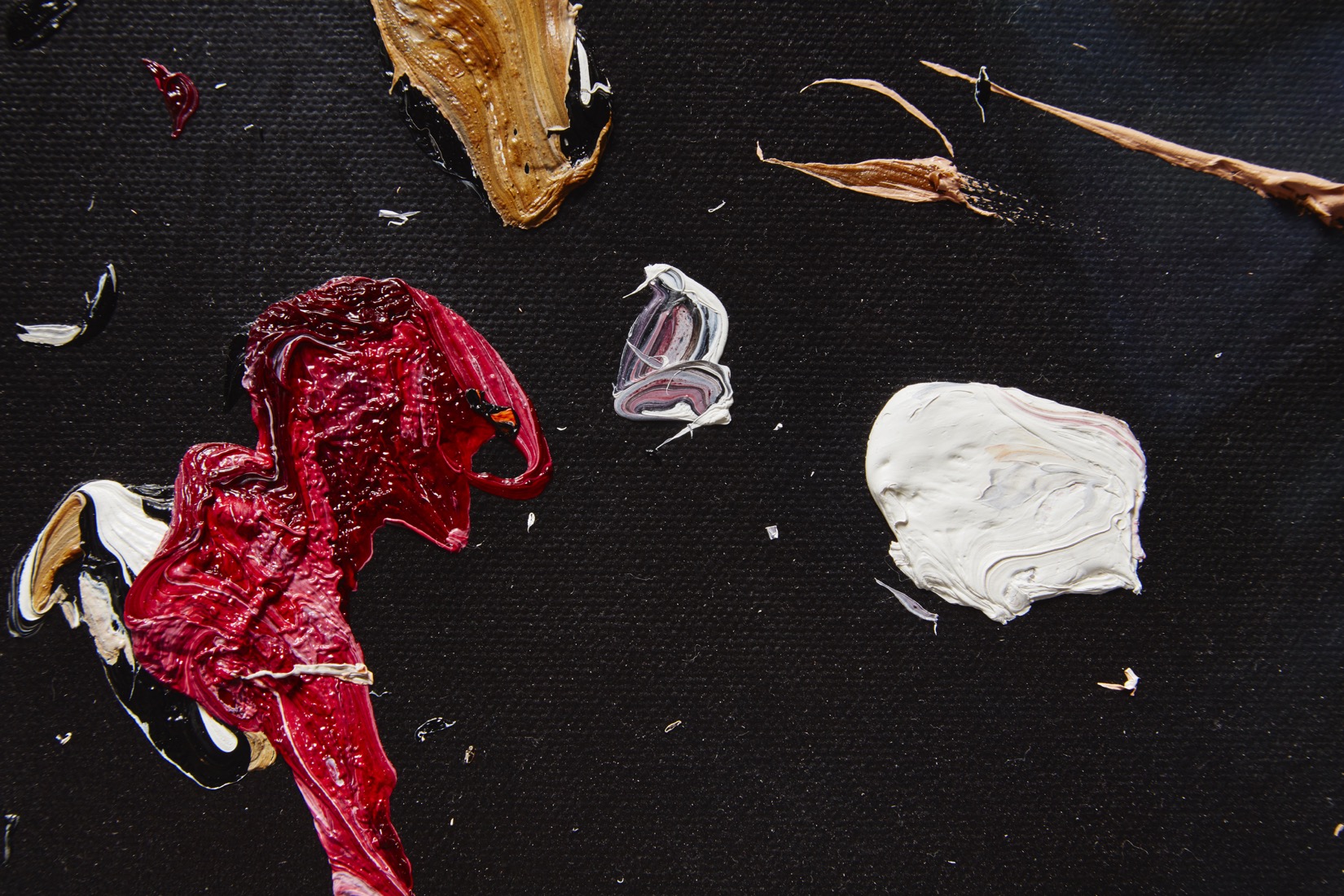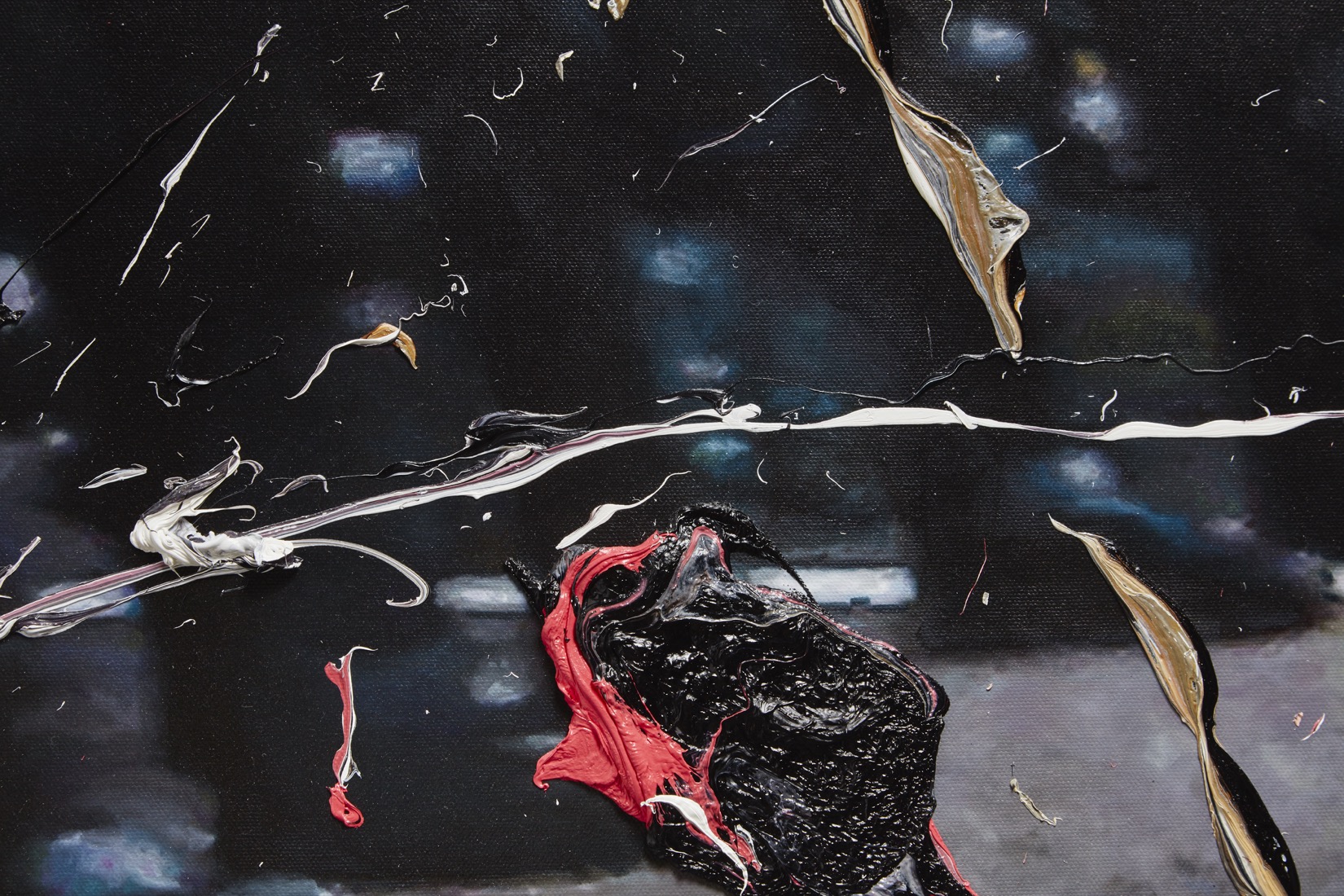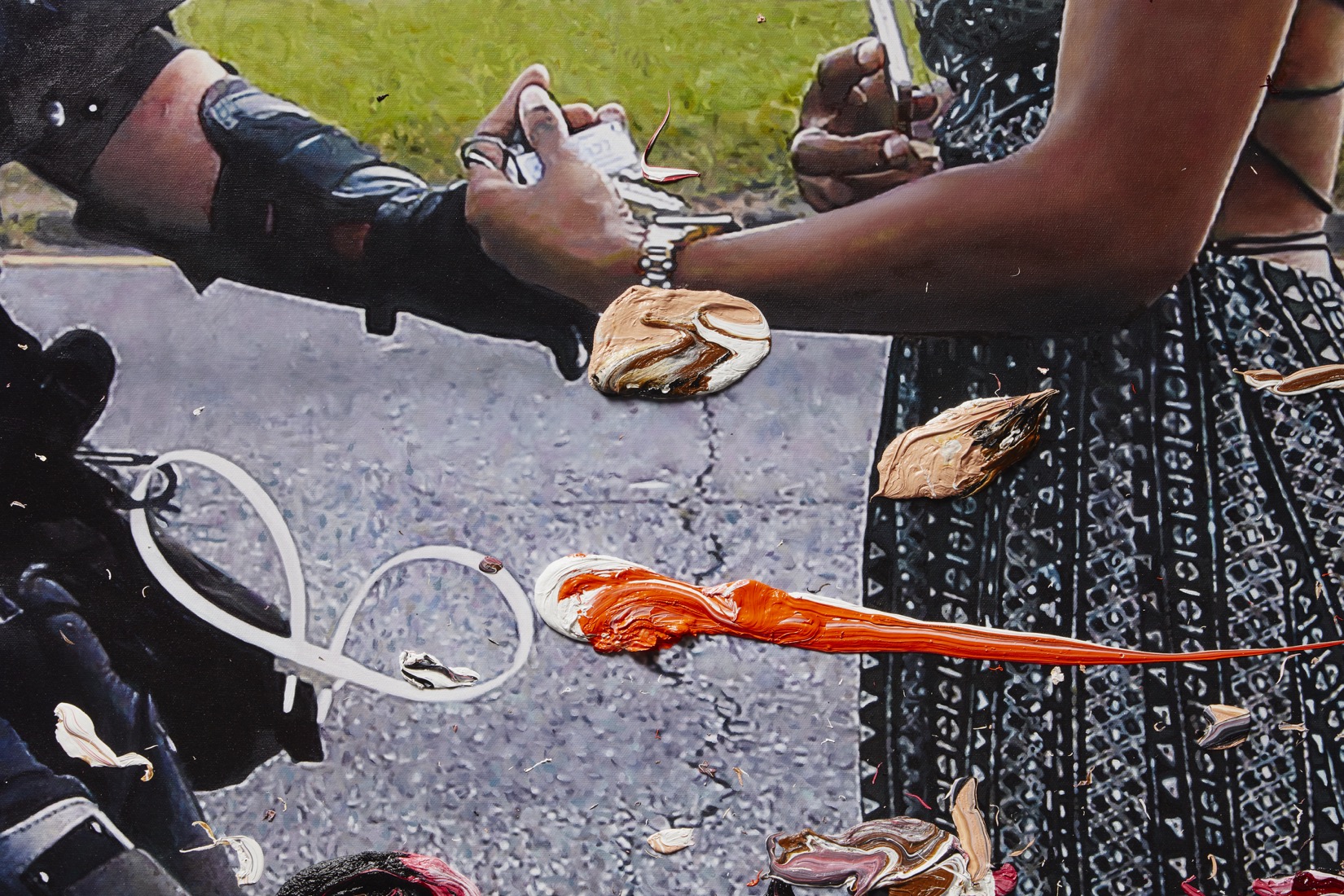Artwork Details:
- TypePainting
- Year2017
- MediumOil on canvas
- Dimensions262h x 420w cm per piece
More about this artwork:
This painting was made in 2017 and depicts the arrest of Ieshia Evans in Baton Rouge while protesting the fatal shooting of Alton Sterling in July 2016. It is a photoreal oil on canvas painting (262h x 420w cm) of a photograph taken by Jonathan Bachman during the protest. This photo won 1st prize in the World Press Photo’s 2017 Photo Contest and was nominated for a Pulitzer Prize.
Part of Quinn’s History Paintings series, the painting plays on ideas of materialisation and dematerialisation, where paint is used in a photorealistic way and also in an abstract way, as primordial matter. The ten-year series explore the way in which current affairs are communicated in the media, and how this steers the course of history. Power is being upended in the contemporary world, and change is coming from the bottom up rather than top down in our contemporary society. The History Paintings are hyperreal oil paintings of pivotal moments in recent history, drawn directly from press photography, which in a final step are strewn liberally with paint by Quinn. In creating artworks that simultaneously employ oil paint as the image and in its abstract primal form, the series discusses the tension between order and chaos in the world. Paint in its abstract form holds all the possibility of every painting ever painted, yet it is also complete chaos.
“Quinn’s 2017 History Painting of Ieshia Evans protesting the death of Alton Sterling in Baton Rouge speaks directly to Quinn’s remarkable gift of creating space for others. This giant painting depicts the grace and dignity of a black woman not only standing up for her rights but evoking, with saintly composure, the decades-overdue reckoning of the debt owed to African-American lives in the face of white oppression. In bearing witness, Quinn also brings us into confrontation with his own privilege, and the history of an art market and system which has always continually reinforced the myth and value of the white European male gaze. Quinn is one of the few white European male artists who has forcibly worked throughout his entire career to deterritorialise his position, shape-shifting as a decoloniser, re-humaniser and activator of empathy and story using his status and power as an agitator against the status quo to ethically collaborate, fundraise, and support those whose voices have consistently not been allowed by society to have equal status or privilege.” – Jefferson Hack, AnOther Magazine





